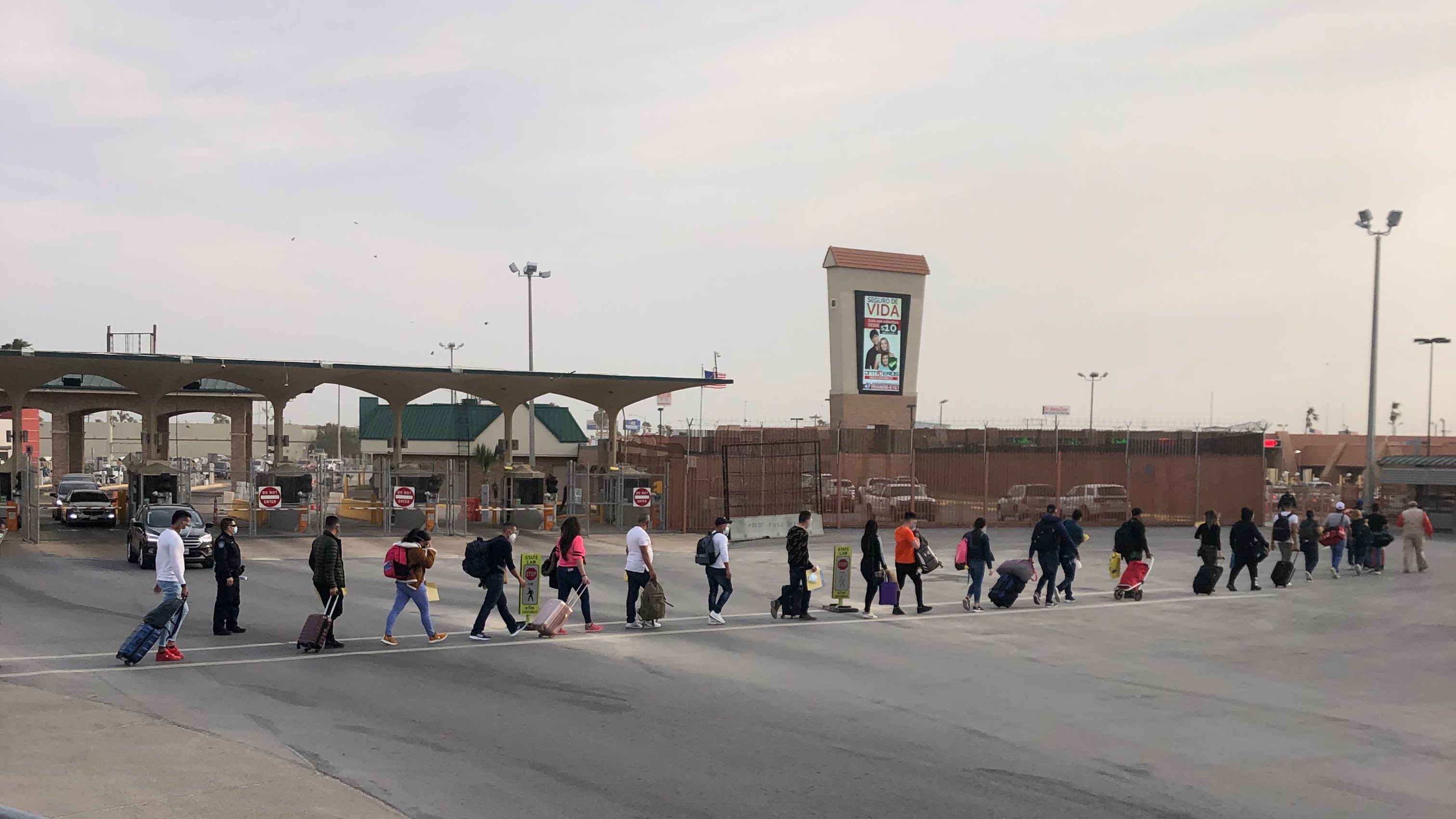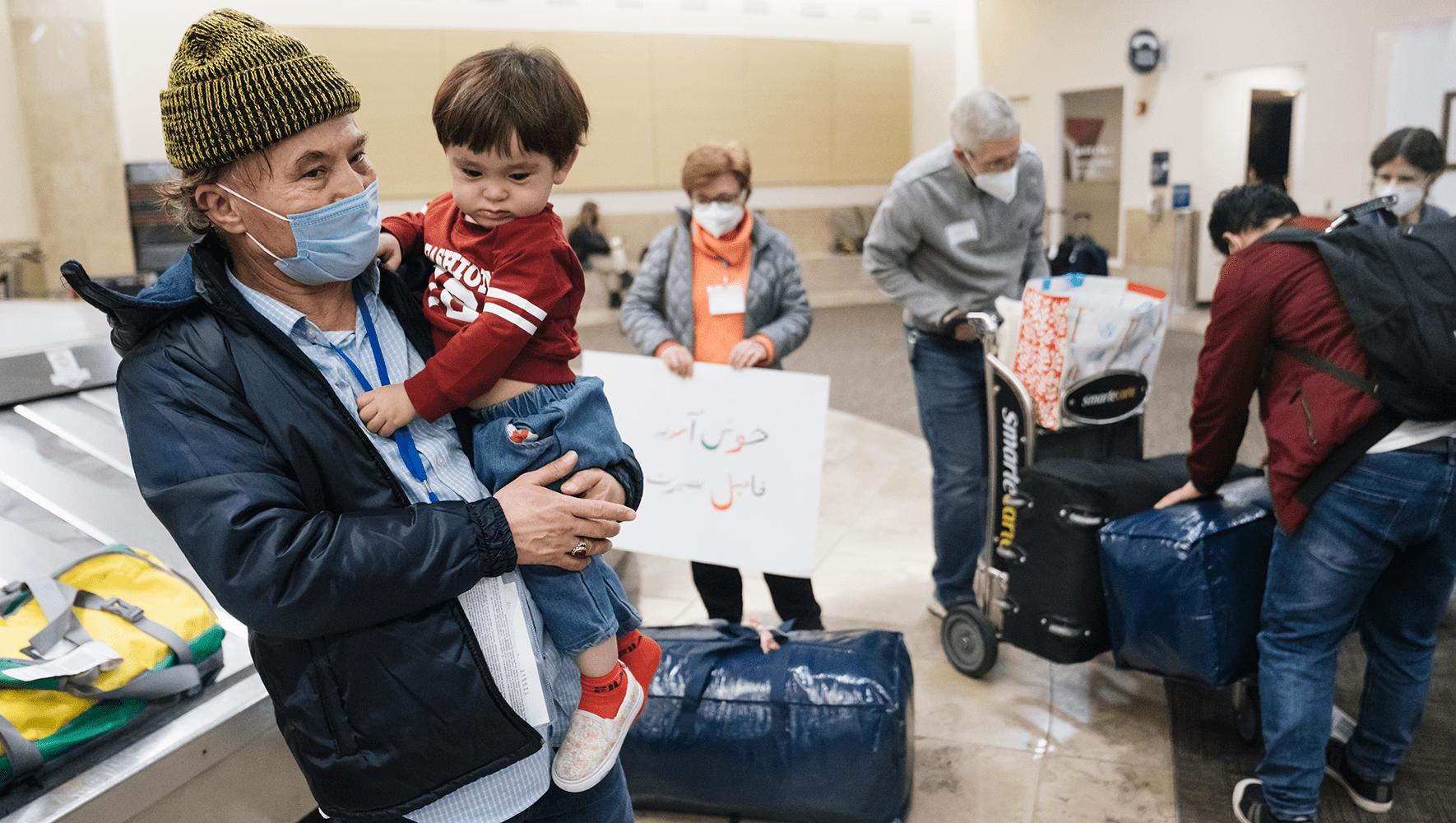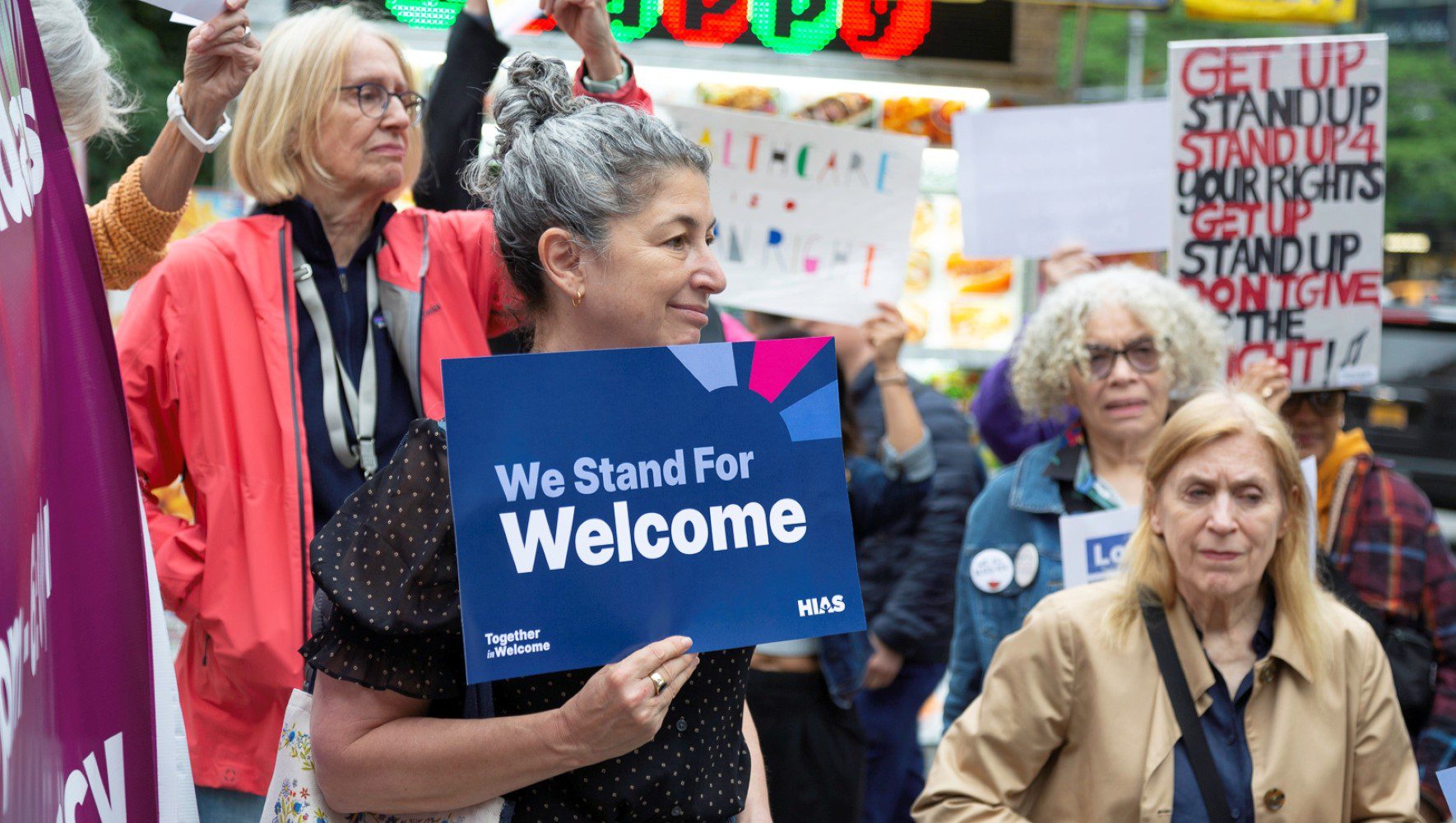Good News and Bad News at the U.S.-Mexico Border
By Max J. Rosenthal, HIAS.org
Apr 07, 2021

Asylum seekers walk to a Customs and Border Protection facility at the McAllen/Hidalgo International Bridge on April 1, 2021. The asylum seekers were formerly enrolled in the Migrant Protection Protocols, also known as the "Remain In Mexico" policy.
(Sue Kenney-Pfalzer/HIAS)
On a recent day in Reynosa, Mexico, a group of 25 asylum seekers prepared for the last leg of their journey to the United States. The group — most of them from Cuba, with others from Central American countries — had been trapped in Reynosa for months by the Trump administration’s “Remain In Mexico” policy. Now, with the policy rescinded, they gathered at a staging area to finalize their paperwork and get a ride to the U.S.-Mexico border.
There, under white-topped tents in the courtyard of the local office of the International Organization for Migration, they were met by staff members from HIAS Mexico, who guided them through the process: helping them fill out U.S. government forms, briefing them on how the day would unfold, and then, finally, organizing a van ride to the border crossing.
“For the past four years we've been having to give almost all bad news to people and see people when they're just so frustrated and upset,” said Sue Kenney-Pfalzer, the director of HIAS’ Border and Asylum Network, who was at the staging area in Reynosa. “So to see people just so excited and they're cheering, and we're cheering for them as they're getting on the vans and stuff, that's a really cool feeling.”
For most of these asylum seekers, it was the end of months or years of living in dangerous limbo in Mexico. The Trump administration’s “Remain In Mexico” policy — formally called the Migrant Protection Protocols, or MPP — had forced asylum seekers to wait in Mexico rather than in the safety of the United States for their cases to be heard by U.S. immigration courts.
That policy created a humanitarian disaster along the border. Tens of thousands of asylum seekers, including children travelling without their parents, have been stuck in temporary shelters without money, medical care, and other necessities. They have reported more than 1,000 instances of murder, kidnapping, rape, and other violent crimes against them, according to Human Rights Watch
The Biden administration ended MPP in January and, about a month later, began allowing small numbers of asylum seekers with active MPP cases to enter the United States, where they can stay until their cases are heard. Virtually all of them have crossed the border with the help of HIAS Mexico, which was tasked by the U.N.’s refugee agency to process the asylum seekers leaving MPP. “HIAS Mexico is the main [non-profit] that's involved at every single port of entry on the Mexico side for this MPP wind-down,” said Kenney-Pfalzer.
More than 3,000 asylum seekers in MPP have left Mexico since late February. But while Kenney-Pfalzer was cheered by the progress she saw, she said the Biden administration still has much work to do at the border. U.S. officials, for example, have still not said how they will expand the phase-out of MPP to the tens of thousands of asylum seekers without active cases. “There's this whole other huge group of people that need some sort of redress that the administration hasn't mentioned at all,” Kenney-Pfalzer said.
The administration has also continued to use a Trump-era interpretation of a law called Title 42 to keep the border largely closed to immigrants, supposedly to stop the spread of COVID-19 (though health experts say the measure does nothing to stop the disease). The vast majority of people who cross the border now are being deported without any due process. “At the same time that we're doing this processing in, thousands of people are being expelled back across the border into Mexico or put on planes and deported,” Kenney-Pfalzer said.
In Reynosa, she saw the human toll of Title 42. Just a short walk from the staging area, Kenney-Pfalzer found dozens of migrants camped out under a gazebo at the center of a local park, unable to find shelter after being expelled from the United States. On the morning she visited, the floor of the gazebo was covered in blankets and sleeping bodies, the railings lined with spare clothing and small bags.
“It was just such an extreme. Everyone we were processing in the MPP tents were so happy. They're about to go to the U.S., they've been waiting, they're so excited,” she said. “And then you walk over to this park and everyone is just so sad. And there's nothing to tell them ... Until Title 42 is lifted, there's literally nothing that we can tell them.”
Those contrasting scenes are a reminder that groups like HIAS have to keep pressuring the Biden administration to fix the immigration system. “The work's not done, is the bottom line,” Kenney-Pfalzer said.


